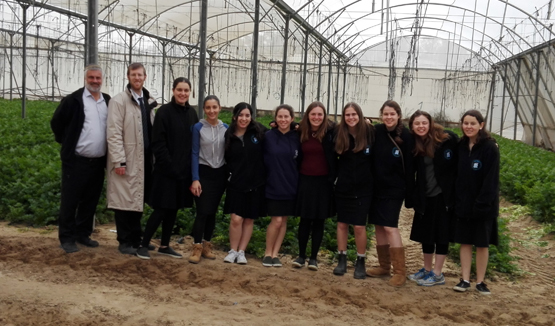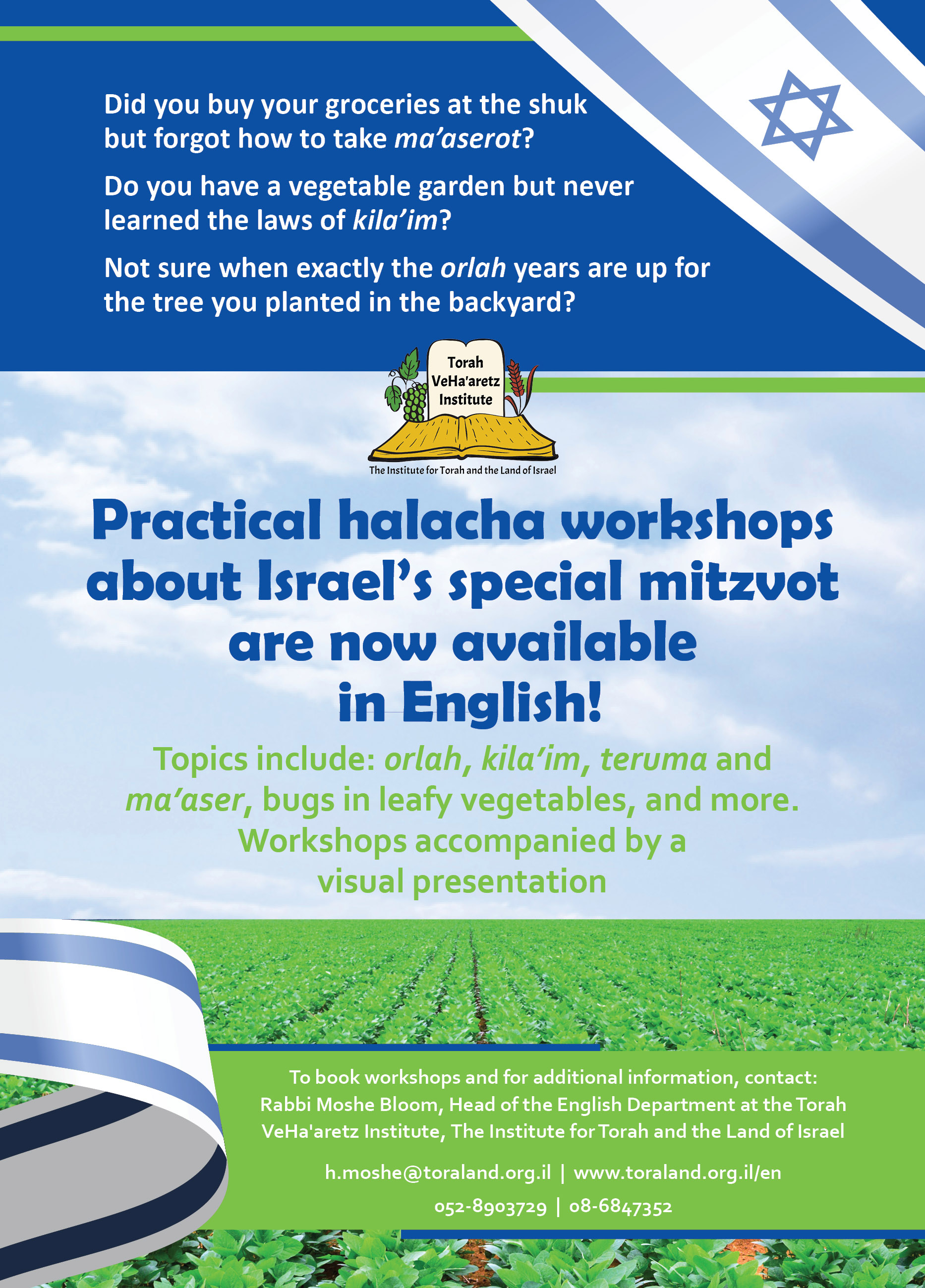
Sivan 5778, Issue no. 2
Workshops in English
Workshops on Israel's special mitzvot
Q&A
Matanot Ani’im Today
Question:
If someone has a tree in his yard, does he need to leave the matanot ani’im on the trees and hang up a sign outside? Or should the home owner harvest some of the fruits and give them out to poor people? While there might be poor people in the neighborhood, they may not know the halacha and they might not come at all.
Rabbi Yaakov Epstein
Answer:
- Matanot ani’im fall into two categories: (1) leket, shichecha, pe’ah, peret, and olelot and (2) ma’aser ani. For all of the gifts in the first category, the onus is on the poor person to take them, while the owner of the fruit is obligated to leave them and not take them for himself. When it comes to ma’aser ani, on the other hand, there is an obligation to set it aside and yet another obligation to give it to a poor person.
- From the gemara in Chullin it seems that if poor people do not come to take their gifts, there is no obligation to leave the fruit for them. In this case, the owner of the fruit can take them for himself and then separate terumot and ma’aserot from these fruits.
- We are supposed to take ma’aser ani in years three and six of the shemita cycle and give it to the poor. If there are no poor people in the vicinity, we need to give the value of the fruit to the poor, since by the time a poor person comes the fruit could rot.
- Torah VeHa’aretz Institute’s Beit HaOtzar has an arrangement with a tzedaka committee that loans money to poor people. When separating ma’aser ani at home, the ma’aser that is supposed to be given to a poor person is returned to the owner of the fruit, while its value is transferred by Beit HaOtzar to the poor.
About Us
Encyclopedia of Halacha and Agriculture
Shavuot is the festival of cheese cake!
Why did Chazal prohibit eating cheese manufactured by non-Jews?
How is it permissible to pour milk into meat and nevertheless eat the product?
Is it possible to produce cheese from camel milk? And what effect does fig sap have on milk?
You can find the answers to these questions and more in the Encyclopedia of Halacha and Agriculture (in Hebrew), accessible on the Torah VeHa’aretz Institute’s website.
The Encyclopedia of Halacha and Agricultures is a new project by Torah VeHa’aretz Institute that brings together professional and halachic information related to all areas of agriculture (plants and livestock). Authors include leading scientists and poskim who specialize in the mitzvot associated with the Land of Israel.
News
Midreshet Torah v’Avodah visits Torah VeHa’aretz Institute
Torah VeHa’aretz Institute had the distinct privilege of hosting young women who came to Israel for the year to study at the Midreshet Torah vʼAvodah seminary of World Bnei Akiva. The tour marked the end of their week-long trip on the theme of Zionism, organized and guided by Rabbi Alan Haber (a Midreshet Torah v’Avodah faculty member), in which they also become more acquainted with Israeli society.
The group arrived for a tour of the Chasalat-Alei Katif hothouses, situated south of Ashkelon. The tour opened with a short talk on the thriving agriculture that once was in Gush Katif. The group then entered the hothouses, and saw up-close how insect-free vegetables are grown. The tour concluded with a presentation on some of the mitzvot tied to the Land of Israel.
The tour was facilitated by Rabbi Moshe Bloom. We would like to thank Rabbi Alan Haber for coordinating the tour.


